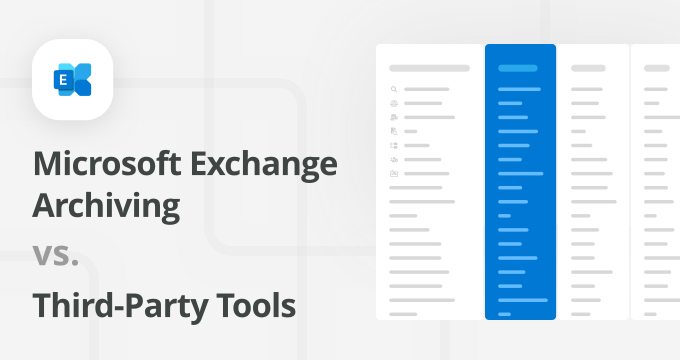Starting your AWS journey can be daunting at first, but there are many companies out there that have, with little or no prior experience, moved to the cloud. Smaller companies without a dedicated DevOps team (especially startups) usually have to work with what they have, and while designing and running an AWS cloud environment is certainly doable for them, mistakes are likely to be made.
That’s why it’s vital to do the research and try to build things properly from the ground up, thereby avoid having to deal with the haunting technical debt down the line. In this article we’d like to help you get started by giving you five tips on how to run your business on the AWS cloud.
1. Use the correct services for your business needs
AWS cloud currently offers over 100 services, and while it’s very easy to get lost in this offering, you only actually need a couple of basic ones to get started.
Most of the time the first thing you have to do is set up the networking using the VPC service. Then, you can start adding resources like EC2 instance, AutoScaling Groups, Elastic Load Balancers, RDS databases etc. And if you have the need for data storage (which is almost always the case), S3 is often the best choice.
When designing your AWS cloud environment, make sure you find the services that will be the best fit for your specific use case. Also, it’s important to keep things simple – overcomplicating your design can not only lead to suboptimal performance, but can also increase the overall cost unnecessarily.
2. Keep a tight security when it comes to user access
When working with the AWS cloud, security should be your primary concern. Mistakes can be made too easily and companies have suffered too often because they thought themselves immune to bad things happening.
When you first create an AWS account, it’s critical to protect the root user (the user that’s being created with your account by default and has unlimited access to everything within it).
This not only involves a strong password that is to be stored away safely, but also Multi Factor Authentication (MFA) as an extra layer of protection.
Additionally, each of your users should have the least privilege access (if a person doesn’t need access to a service or a resource, they shouldn’t have it), as well as a strong password and MFA enabled. AWS provides a list of security best practices for user administration that you should follow to properly protect your AWS resources.
3. Consider business continuity
No matter how well you’re protected or how carefully your cloud environment is designed, things can always go wrong. Natural disasters causing disruption of the service, hacking attempts, or human error – at the end of the day, you have to be prepared for anything.
To ensure business continuity, you need to have a well thought-out Disaster Recovery (DR) in place. This can include regular backups, utilizing infrastructure as a code to easily replicate your environment in another region and even custom-tailored solutions that will help reduce the downtime of your business applications. Additionally, consider your Recovery Time Objective (RTO) and Recovery Point Objective (RPO), as they can play a crucial role in determining the requirements of your DR plan.
4. Improve your cloud environment, but also train the people working with it
Even a well-designed cloud environment today can find itself lacking tomorrow. Amazon releases new services regularly (with the re:Invent convention being the place for the majority of announcements), but also keeps upgrading the existing ones – so be on the lookout for updates that you can utilize to your benefit.
On the other hand, to successfully run a business in the cloud, you also need to have your employees familiar with the technology that’s being used. Until recently, only DevOps engineers really needed to understand how AWS works. As the utilization of the AWS grew, there are now developers, project managers, support, and even marketing teams working closely with various aspects of the cloud. This is why it’s crucial to have proper training in place and have your employees become cloud competent as soon as possible.
5. Always look for opportunities to reduce the cost
Cost control is one of the most important aspects of running a business, and should only be second to security. There’s a common misconception that AWS is very expensive, and while no one would argue that it’s cheap, most of the unwanted expenses actually stem from improper use.
Bad design, using a wrong instance type for your application or a storage tier for your data, not understanding transfer costs between resources, etc – all this can lead to you paying way more than you should.
Most companies tend to have everything up and running quickly, and only look into cost savings when the monthly bill becomes too high to ignore. Instead, try to keep track of your spending from the beginning – this will not only help you understand how the money is being spent, but can also spare you the unpleasant conversations with the higher-ups down the line.
Summary
The world of IT is constantly evolving, and the widespread adoption of public clouds like AWS has pushed us into a new territory that can be hard to adjust to. Where before we had data centers and bare metal hardware, we now have on-demand elastic infrastructure, as well as a multitude of managed services. All this new technology, and even terminology, takes time to comprehend and master.
In this article we gave you five tips to consider when first starting your AWS cloud journey, but there’s a long road ahead before you can happily run your business in the cloud. Our next topic is cloud security trends, so make sure you follow our blog for more useful AWS articles.
Jatheon Cloud is a fourth-generation, cloud-based email archiving platform that runs entirely on AWS. To learn more about Jatheon’s cloud archive, contact us or schedule your personal demo.











